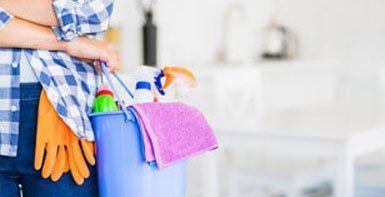The What and How of Bathroom Cleaning: 5 Bathroom Components and How to Clean Them

It is a universal truth and fact that the first and foremost component of any household that requires cleaning is the bathroom(s). Due to their nature itself, it is obvious that we keep them clean, to make sure that our guests do not have to think twice before using it for the second time (because for the first time, they won’t be having any idea what they are in for). Thus, we need to have clean and tidy bathroom which has a positive effect on our guests and greet us in the way we expect them to.
It is not always possible to clean each and every component of your bathroom at once. And the best way to avoid having a tough time cleaning your entire bathroom at the end of the month is by cleaning each component at intervals.
Here are 5 bathroom components and how to clean them in an effective manner:
- Bathroom Sink: Do not let watermarks to build up- get to work cleaning the sink at the very first sign of marks or dirt and grime. First, fill the sink half-way with hot water. Next, you can either add spray cleaners or vinegar. Use a cloth and the solution to wipe the sink to the last inch of dirt mark. If need be, you can use abrasive cleaner or mix water and baking soda and use the paste to rub off grime. Keep in mind not to use abrasives on scratch-able surfaces.
- Bathroom Sink Drain: Another important component that requires seldom cleaning is your bathroom-sink drain. A drain that is left without cleaning for more than a month can certainly lead to stinky smells and hardened dirt and grime that can be really hard to get rid of; which is why it is suggested to clean the drain once every week at least and clean the debris. You might require a drain snake to clear the hardened clogs. Use a pipe cleaner (non-corrosive) to flush your drain clean.
- Toilet: Perhaps, the least favorite component of any bathroom décor, the toilet should be maintained in the cleanest of ways. Use the bathroom cleaning products (or, a mixture of water and vinegar) to spray on your toilet surfaces and wipe with a clean washcloth to the last bit.
As for the toilet bowl, sanitizing it using a good anti-bacterial solution (you can also use the mixture of bleach and water). Use a durable toilet wand for scrubbing every nook and cranny, let the solution sit for 12 to 15 minutes, then flush it off. - Shower Head: Due to regular usage, these can accumulate gunk very fast. An effective way to clean them is to tie a plastic bag filled with white vinegar on over the showerhead with the help of a rubber band. Let it be for approximately an hour, then remove it and turn on the water to flush. Then polish the head using a soft piece of cloth.
Another way is by using a rejected toothbrush and vinegar to wipe the head. Use toothpicks to clean the holes. - Bathtub and faucet: As it is with the sink and toilet, use a regular cleaner or a mixture of water with vinegar or baking soda. For rust, use an abrasive cleanser. It is advised to not use undiluted bleach for porcelain surfaces and it can hurt the surface.
For the faucet, use the same regular cleaner. Wipe around with a washcloth. For areas that are hard to reach, use a toothbrush.
Other than these 5, another important aspect is the bathroom surface. Since each kind of surface, e.g. marble or granite or vinyl or slate, requires a different set of bathroom cleaning manners, the best way to take care of them is by going the manufacturer’s recommendations.
Keeping your kitchen clean will not only have a positive effect on you and your guests but will also add to your overall home décor. A good-looking clean bathroom is indeed a thing to show off.
![]()

As a lifelong DIY enthusiast, Alex Barton is never afraid to go the extra mile to save a few bucks! From seamless interior decor hacks to effective DIY home renovation tips, he shares a myriad of his experiences for you to unleash your creativity.



















